Posts for: northcoast42
Oct 8, 2020 18:47:49 #
tramsey wrote:
Absolutely breath taking Belongs on your wall with all the rest
Thanks! I'm almost done. I'm compiling all my Mars images since early August to produce one composite. Hoping it turns out. It's been a 2 month project I've been waiting to do since the last Mars opposition in 2018. Back then, even though Mars was several million miles closer, it was over 25 degrees lower towards the southern horizon and was covered by a planet wide dust storm making it virtually impossible to capture images with any detail. Happy to say, it's been a different story this year.

Oct 8, 2020 18:41:51 #
Ballard wrote:
Great shot. I took some images last night but the seeing was really bad so the image detail wasn't that good.
Thanks. I can empathize with your poor seeing conditions. We've been fortunate to have avoided the worst of the wildfire smoke for the most part this year. Had about a 10 day stretch where it got so bad we had the worst air in the country but thankfully that didn't last. We were blessed with an exceptionally clear and calm night last Monday. Everything just came together. That doesn't happen often. This was the final shot in a two month project. I'm compiling all my images since early August. Hopefully the end will justify the means

Oct 8, 2020 01:23:40 #
My best image of Mars to date. I really wanted to catch it at the exact time it would be closest to Earth but that was at 7am and Mars would be lost to the day but the night was clear and calm and I could not have asked for better imaging. Although still 5 1/2 hours away from its closest point, by this time Mars was closing the distance so gradually that even at 1:30am it was still "only" 38.569 million miles away. It won't get this close again until 2035.
For this image:
12" Meade LX850
Powermate 4x image amplifier
ZWO ADC
ASI 224MC video camera
laptop running Firecapture software
The image is the result of a 2,000 frame stack from an 11,000 frame video sequence. Cropped and debayered in Pipp, aligned and stacked in Autostakkert3, wavelet processed in Registax6 and because I close cropped it in Pipp, the final step was to put it back in a wide field black background in PhotoshopElements.
For this image:
12" Meade LX850
Powermate 4x image amplifier
ZWO ADC
ASI 224MC video camera
laptop running Firecapture software
The image is the result of a 2,000 frame stack from an 11,000 frame video sequence. Cropped and debayered in Pipp, aligned and stacked in Autostakkert3, wavelet processed in Registax6 and because I close cropped it in Pipp, the final step was to put it back in a wide field black background in PhotoshopElements.
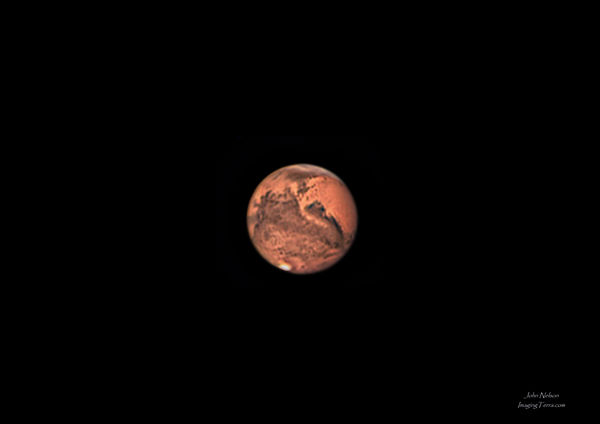
Sep 18, 2020 15:55:09 #
inclinerr wrote:
if my math is correct then you were shooting about 58 frames per second. Any additional info please.
Slightly fewer fps actually. The time for this segment was actually 159.9 seconds. Here's the entire "exif" for the video segment I shot to get this image:
Camera=ZWO ASI224MC
Filter=RGB
Profile=Jupiter
Diameter=46.85"
Magnitude=-2.70
CMI=149.4° CMII=334.9° CMIII=57.3° (during mid of capture)
FocalLength=4500mm
Resolution=0.17"
Filename=Jup_224319.ser
Date=040820
Start=224159.253
Mid=224319.203
End=224439.153
Start(UT)=054159.253
Mid(UT)=054319.203
End(UT)=054439.153
Duration=159.900s
Date_format=ddMMyy
Time_format=HHmmss
LT=UT -8h
Frames captured=8450
File type=SER
Binning=no
ROI=1024x768
ROI(Offset)=0x0
FPS (avg.)=52
Shutter=2.112ms
Gain=384 (64%)
HardwareBin=off
Gamma=64
SoftwareGain=10 (off)
FPS=100 (off)
HighSpeed=off
Brightness=1 (off)
AutoHisto=75 (off)
USBTraffic=100 (off)
AutoGain=off
WRed=52 (off)
AutoExposure=off
WBlue=95 (off)
Histogramm(min)=0
Histogramm(max)=207
Histogramm=81%
Noise(avg.deviation)=n/a
Limit=none
Sensor temperature=28.5°C
Sep 17, 2020 16:48:49 #
Paul Diamond wrote:
Impressive. Pls, what telescope?
I used a Meade 12" LX850 with a 2x Powermate.
Sep 17, 2020 15:17:56 #
Here's the third of my bright planets shots this summer. I did this one in early August about 3 weeks after opposition. I used a 2x Powermate so I could also capture one of the Galilean moons, Io in this case. The other 3 were too far away from the planet to catch in frame.
I used a color camera (ASI224MC) for this one. The sequence was done over 2min30sec and captured 8450 frames. Given Jupiter's fast rotation, that's about the maximum time I'm comfortable with before derotation becomes a consideration. I ended up stacking 2400 frames in Autostakkert3 to get this image. As low as the planet was (declination -22°23'01"), I was pleasantly surprised at how well this came out.
I used a color camera (ASI224MC) for this one. The sequence was done over 2min30sec and captured 8450 frames. Given Jupiter's fast rotation, that's about the maximum time I'm comfortable with before derotation becomes a consideration. I ended up stacking 2400 frames in Autostakkert3 to get this image. As low as the planet was (declination -22°23'01"), I was pleasantly surprised at how well this came out.

Sep 17, 2020 14:56:29 #
bwana wrote:
A lot of work but the result is very nice and well worth the effort!
bwa
bwa
Thanks. This is one of my better images of Saturn. The last time I did planets was two years ago. Saturn was a just a bit lower (declination -22deg in 2018 vs -21deg this year) to the horizon then. I'm looking forward to 2023. Saturn will be about 10 degrees higher (-11 deg) and Jupiter will be nearly 40 degrees higher. The imaging should be (hopefully) much improved.
Sep 17, 2020 14:44:12 #
OneShot1 wrote:
Very cool. Thanks for process info. Lotta work!
Thanks. I don't really think of it as work, it's just fun. The processing is almost as much fun as the capture. I never really know how good (or bad) the final image will be until I'm done.
Sep 17, 2020 14:42:21 #
Sidwalkastronomy wrote:
As someone who has done some astrophotography nice capture. I always love showing someone Saturn through a telescope and seeing their reaction to this magnificent planet
I also like showing people this planet and Jupiter as well. With Saturn, the rings always capture their imagination and fascination. With Jupiter, the 4 bright Galilean moons tend to captivate.
Sep 16, 2020 04:36:00 #
Saturn reached opposition this summer and has been steadily moving away for awhile now but still close enough for some decent attempts. It's pretty low in the sky from my position in the Pacific northwest (Puget Sound, Washington) and to tell you the truth, I was pleasantly surprised at how well this came out. One other note....the smoke arrived last week and it hasn't left. For a time, the news was saying we had the worst air quality in the country. Hard to believe with the raging fires going in California. Hoping for clear skies again soon.
I used a Meade 12" LX850 with a 4x Powermate image amplifier attached to an ADC (atmospheric dispersion corrector) attached to an RGB filter wheel attached to a Skyris236M monochrome video camera.
The process begins with capturing 3 separate video sequences of (in this case) about 5000 frames each. One sequence is done through a red filter, one through the green filter and one through the blue filter. I take each sequence into a program called Pipp to crop and center the planet so the next program (Autostakkert3) will have a stable target to align and stack. In a 5000 frame stack I'll end up actually stacking around 2000-3000 frames depending on the quality of the sequence. From each sequence I end up with a single image so 3 sequences gives me three frames, one from the red filter, one from the green and one from the blue. I take each frame into Registax wavelet processing for sharpening and detail enhancement. From there I take all three images into photoshop for integration into the full color (RGB) image you see here.
I used a Meade 12" LX850 with a 4x Powermate image amplifier attached to an ADC (atmospheric dispersion corrector) attached to an RGB filter wheel attached to a Skyris236M monochrome video camera.
The process begins with capturing 3 separate video sequences of (in this case) about 5000 frames each. One sequence is done through a red filter, one through the green filter and one through the blue filter. I take each sequence into a program called Pipp to crop and center the planet so the next program (Autostakkert3) will have a stable target to align and stack. In a 5000 frame stack I'll end up actually stacking around 2000-3000 frames depending on the quality of the sequence. From each sequence I end up with a single image so 3 sequences gives me three frames, one from the red filter, one from the green and one from the blue. I take each frame into Registax wavelet processing for sharpening and detail enhancement. From there I take all three images into photoshop for integration into the full color (RGB) image you see here.

Sep 16, 2020 04:20:58 #
I did this with a Skyris 236M monochrome video camera. The imaging train consisted of that camera attached to an LRGB filter wheel, attached to an ADC (atmospheric dispersion corrector), attached to a 4x Powermate image amplifier, all attached to a 12" Meade LX850 telescope. The process involves capturing three separate video sequences, one through a red filter, one through a green filter and one through a blue filter. In this case each sequence consisted of approximately 5000 frames. Each sequence was cropped and centered in Pipp. I used Autostakkert3 to align then stack between 1900 and 2300 frames to get three .png format images which were individually processed in Registax wavelets to sharpen and bring out detail before taking them into photoshop to integrate into a single full color (RGB) image which I took into lightroom for final touchup to lighting and contrast.
Aug 30, 2020 04:27:12 #
Europa wrote:
Great image John! So much detail.
Thanks. It's a lot better for imaging than 2018. Even though it was closer then, there's no planet-wide dust storm to contend with this time around.

Aug 29, 2020 18:29:00 #
It's getting closer! If you haven't seen it yet, it's getting brighter and more orange every night as it crosses our sky. It's also pretty high at a +6 declination. Excellent time for imaging this tiny planet. An opportunity like this won't come around again for at least the next 6 years, if then (I didn't check beyond that).
It's about 4 million miles closer than it was 10 days ago when I last photographed it. Not quite showing us the full disc yet. That will happen as Mars approaches opposition.
28 August, when I took this image, it was "only" 47.2 million miles. It will be closest to us on October 6th when it will be 38.6 million miles from us. Opposition will happen on October 13th. It will be just under 39 million miles from us.
It's about 4 million miles closer than it was 10 days ago when I last photographed it. Not quite showing us the full disc yet. That will happen as Mars approaches opposition.
28 August, when I took this image, it was "only" 47.2 million miles. It will be closest to us on October 6th when it will be 38.6 million miles from us. Opposition will happen on October 13th. It will be just under 39 million miles from us.

Feb 12, 2020 19:07:54 #
The Nikon D810 36.3mp camera body and battery pack are in perfect working condition. Very well maintained, no flaws. Shutter count 32,200; about 16% of the projected lifespan of the D810 according to Nikon. Asking $975 with the MB-D12 battery pack. $895 without the battery pack.
Shipping included (within the U.S.)
What’s in the box(s):
- Nikon D810 DSLR Camera Body with original box
- Nikon MB-D12 Multipower Battery pack / Vertical grip with original box (optional)
- Nikon EN EL15 Lithium-ion battery
- Two additional EN EL-15 compatible lithium-ion batteries (1 new in box)
- Nikon UC-E14 USB cable
- Nikon MH-255 Charger
- Lexar 64GB SDXC memory card (150mb/s)
- SanDisk Extreme 64GB CF memory card (120mb/s)
- Body cap
- BN-12 monitor cover
- USB and HDMI cable clips
- English manuals for both the camera body and the battery pack
- Nikon View NX2 software CD
- Nikon D810 camera strap
Photos are of the actual items.
Shipping included (within the U.S.)
What’s in the box(s):
- Nikon D810 DSLR Camera Body with original box
- Nikon MB-D12 Multipower Battery pack / Vertical grip with original box (optional)
- Nikon EN EL15 Lithium-ion battery
- Two additional EN EL-15 compatible lithium-ion batteries (1 new in box)
- Nikon UC-E14 USB cable
- Nikon MH-255 Charger
- Lexar 64GB SDXC memory card (150mb/s)
- SanDisk Extreme 64GB CF memory card (120mb/s)
- Body cap
- BN-12 monitor cover
- USB and HDMI cable clips
- English manuals for both the camera body and the battery pack
- Nikon View NX2 software CD
- Nikon D810 camera strap
Photos are of the actual items.
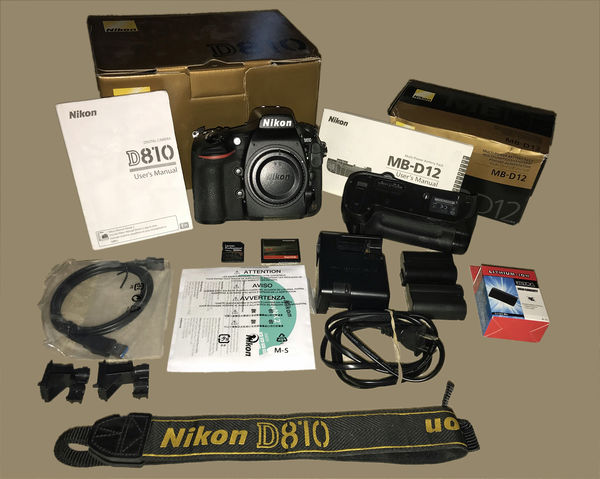
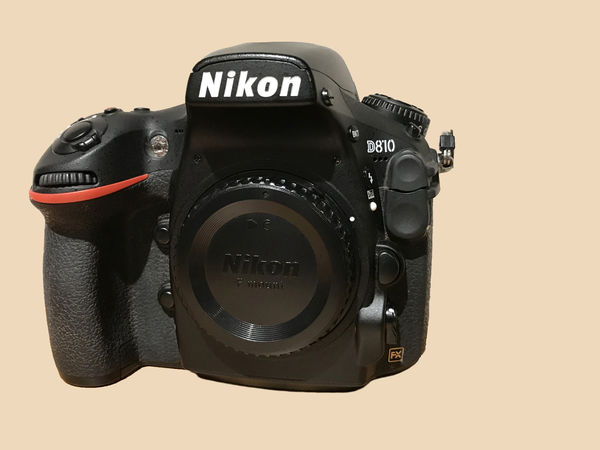
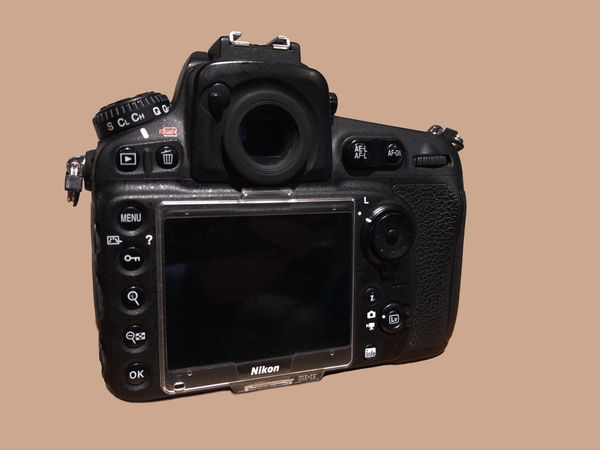
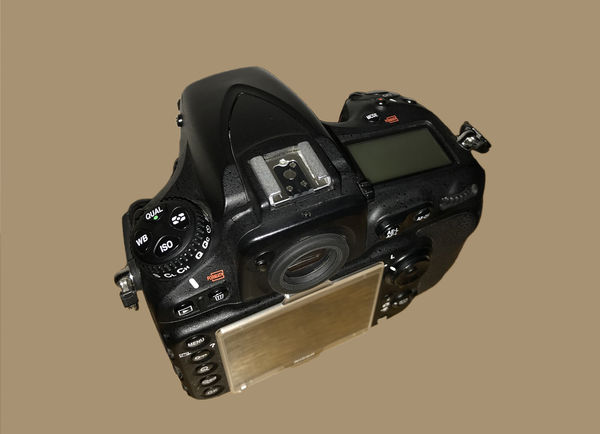
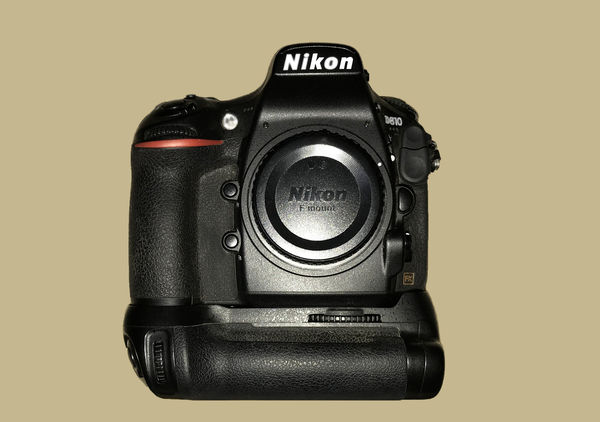
Dec 15, 2019 20:59:43 #